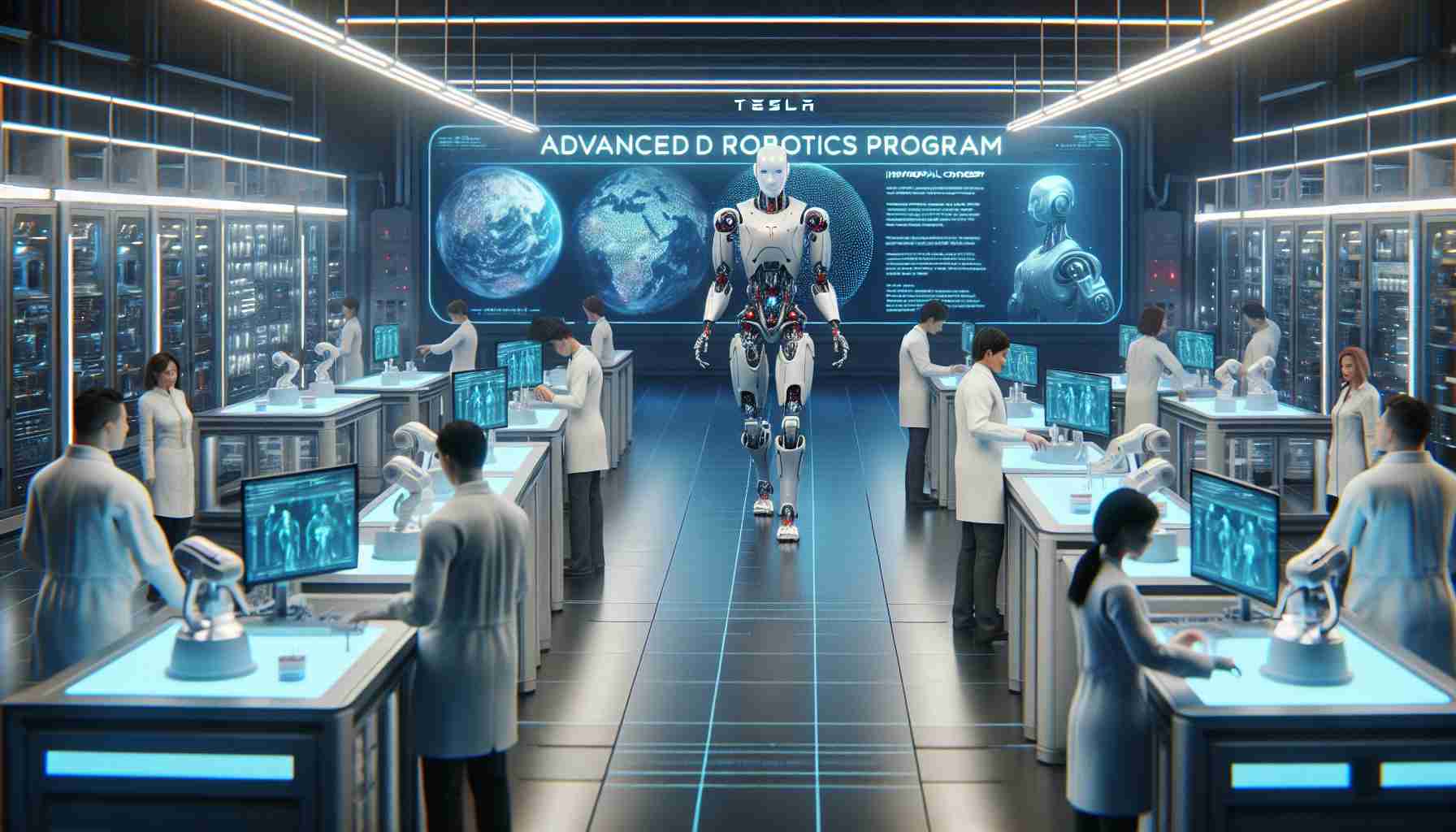- Tesla’s Optimus project is creating a new category of labor with the role of data collection operators.
- Operators are compensated between €23 and €44 per hour, requiring physical stamina and adaptation to VR environments.
- Optimus has demonstrated autonomous task completion, boosting confidence in its potential.
- Analysts speculate potential market valuation growth for Tesla, from $600 billion to $20 trillion with successful robot integration.
- Challenges ahead include the need for substantial investment and extensive training data to refine Optimus.
- Intense competition exists from companies like Figure, backed by major tech players.
- The evolution of humanoid robotics could significantly alter the landscape of future work environments.
As Tesla accelerates its ambitious project of the Optimus humanoid robot, the electric car giant is not just building machines; it’s creating a new workforce. Enter the “data collection operators.” These daring individuals don a motion-capture suit and VR headset to teach robots essential tasks like lifting and folding laundry, all while replicating their movements in real-time.
Compensated handsomely at €23 to €44 per hour, these roles demand stamina and adaptability. Candidates must be willing to walk over seven hours daily, enduring the disorienting effects of virtual reality, while fitting within a specific height range—approximately 1.70 to 1.80 meters—to ensure perfect synergy with the robots they’re training.
Despite skepticism during its 2022 debut, Musk remains unwavering. Last year, Optimus accomplished its inaugural task autonomously, demonstrating the serious potential of this futuristic technology. The stakes are sky-high, with projections suggesting that Optimus could elevate Tesla’s valuation from $600 billion to an astronomical $20 trillion by flooding the market with robots.
Yet, the journey is fraught with challenges. Experts warn that Tesla might need to invest over $400 million and amass countless hours of training data to make Optimus a success. With fierce competitors like Figure—backed by tech giants such as Microsoft and Nvidia—Tesla has its work cut out.
As the world buzzes with excitement over humanoid robotics, one thing is clear: the future of work could soon take on a very different form. Will Tesla lead the charge or face the obstacles ahead? Only time will tell!
Unveiling the Future: Tesla’s Optimus Robot and the New Workforce Revolution
The Rise of Tesla’s Optimus Robot: A New Workforce Paradigm
As Tesla propels forward with its ambitious Optimus humanoid robot initiative, the implications extend far beyond just innovation in robotics; it heralds a potential transformation in the workforce landscape. With a role designated for “data collection operators,” Tesla is pioneering an entirely new category of employment that merges cutting-edge technology with human expertise.
Key Features of Tesla’s Optimus and Its Development Approach
1. Role Dynamics: The data collection operators are essential in training the robots, using advanced motion-capture technology to teach them complex physical tasks. This integration of humans in the robotics training process is a novel approach that could redefine how we interact with machines.
2. Compensation and Requirements: Operators earn competitive wages ranging from €23 to €44 per hour and are required to meet specific physical criteria—height parameters from 1.70 to 1.80 meters—to ensure proper demonstration of tasks for the robots to emulate.
3. Technological Background: The use of VR headsets and motion-sensing suits is not just about training robots; it’s also about gathering high-quality data that will empower the AI systems behind Optimus, hinting at broader applications in augmented reality and remote work environments.
4. Market Trends: Projections suggest that as Tesla develops its humanoid technology, the robotics market could see explosive growth, with potential impacts on Tesla’s valuation anticipated to skyrocket.
Insights and Limitations
1. Investment and Training Challenges: Industry analysts highlight that Tesla might need to inject more than $400 million into training development and data acquisition. This investment is crucial in overcoming the operational hurdles that a project of this magnitude faces.
2. Competition: Tesla’s path forward is clouded by formidable competitors like Figure, which is capitalizing on resources from major tech corporations like Microsoft and Nvidia. This competition may affect Tesla’s market positioning and development speed.
3. Ethical Considerations: The transition towards humanoid robots in workforce settings raises questions about ethical labor practices, job displacement, and the future role of humans in industries increasingly reliant on automation.
Frequently Asked Questions
1. What are the anticipated applications for Tesla’s Optimus robot?
Tesla’s Optimus robot is designed to perform various tasks ranging from household chores to more complex industrial applications, potentially impacting sectors like logistics, manufacturing, and even elder care.
2. How does the compensation for Tesla’s data collection operators compare to other tech industry jobs?
The pay range of €23 to €44 per hour is competitive, particularly for entry-level positions in emerging technology areas. Compared to traditional tech jobs, which can see higher remuneration, this reflects a burgeoning sector still finding its footing.
3. What advancements does Tesla need to achieve for Optimus to be viable in the market?
Key advancements include improving the robot’s autonomy, efficiency in completing tasks, and ensuring safety in various environments—these will require both substantial financial investment and time to gather sufficient training data.
For more detailed insights and analysis on Tesla’s advancements, visit Tesla Official Site.
